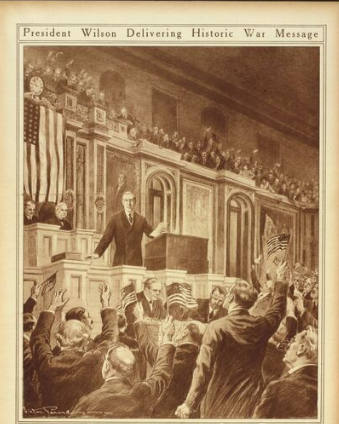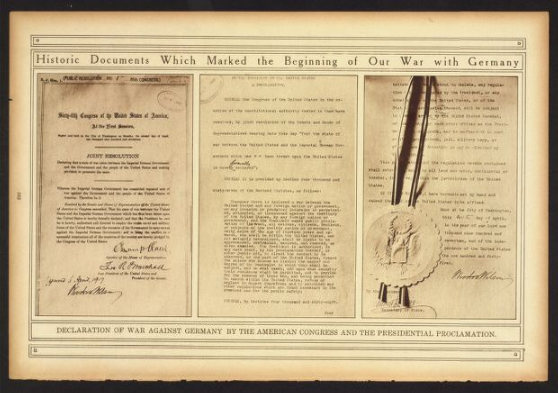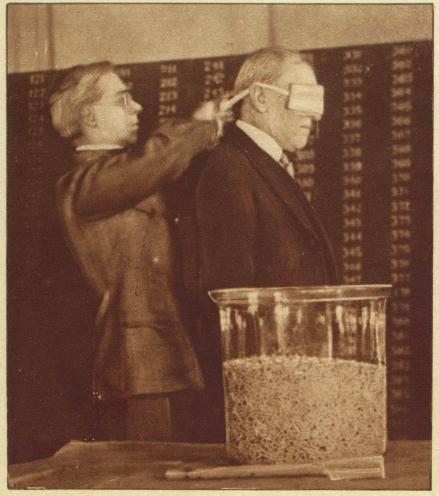Woodrow Wilson Calling for War (1917)

Victor Pernard “President Wilson Delivering Historic War Message, 1917” New York Times
This drawing done by Victor Pernard on April 2, 1917, later published in the New York Times in 1919, depicts Woodrow Wilson at the conclusion of his speech given to members of the 64th Congress in a joint session as well as members of the Supreme Court, the Cabinet and almost the entire Diplomatic Corps. This particular drawing depicts the speech in which Wilson declared unequivocally for war. The depiction of those present at the session, distinguished members of the U.S. government, on their feet waving American flags seems to suggest the overwhelming support for entering into the Great War as well. The fact that the Senate passed the war resolution just two days later with the House concurring in another two days on the sixth provides further support for Wilson’s call for the United States’ to declare war against Germany. Through speaking to Congress, Wilson followed the constitutionally (strict interpretation) laid out procedure for entering into a war by seeking Congress’s formal declaration before troops were deployed, providing a background for how presidential war powers were interpreted at the beginning of the twentieth century in juxtaposition to the close of it.
Declaring War Against Germany, April 6, 1917

64th Congress and Woodrow Wilson, “Historic Documents Which Marked the Beginning of Our War with Germany, April 6, 1917,” New York Times, printed in 1919.
This page of the New York Times shows two documents that led to the declaration of war against Germany on April 6, 1917. One document written by the 64th Congress officially declared war against Germany while the other written by Presidential Wilson confirms the declaration through a public proclamation. Both documents declared the official entering of the United States into World War I as well as informed the American public of the nation going to war. Wilson’s successful push for the United States entrance into the Great War shows the shift towards Congressional deference to the President in times of war while also shedding light on the fact that Wilson, temporarily, pulled the United States away from its previously held isolationist policy, with the support of Congress, setting the precedent for later president Franklin D. Roosevelt to completely abandon the policy all together.
Drawing Names for the United States’ First Military Draft

Photo taken on September 30, 1918. “President Wilson Being Blindfolded,” New York Times, printed in 1919.
This picture of Woodrow Wilson taken on September 30, 1918 depicts the president being blindfolded in preparation for drawing the names from the large container placed on the table beside him. The names within the container hold the 13,000,000 million men eligible for the nation’s first military draft. The men eligible for the draft were between the ages of 18 and 45. This is the first military draft in the history of the United States and was made possible through the passing of the Selective Service Act of 1916, a legislative act that increased the powers of the president during times of war by authorizing the President of the United States to raise a national army for service in World War I through conscription.
The above video, “US President Woodrow Wilson declares war against Germany during World War I. HD Stock Footage,” contains an excerpt that shows President Woodrow Wilson actually being blindfolded and picking the names from the container. The video was filmed in 1918 on the 30th of September but was published later in the 20th century.
